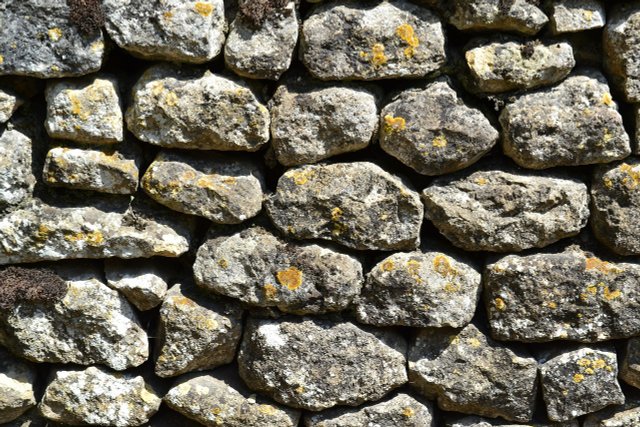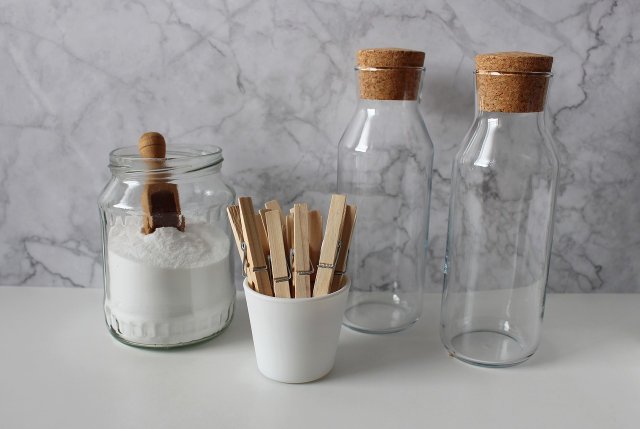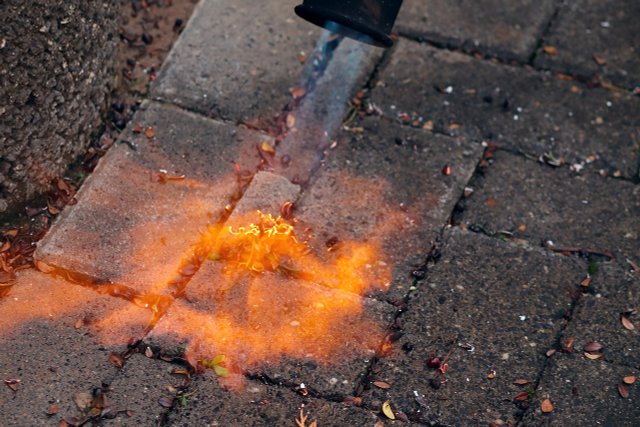
To remove lichen, for example from paving stones, you don’t necessarily need aggressive agents. We’ll show you how to get rid of green coatings easily and naturally with home remedies.
It is not always easy to remove lichens. The green coatings often stubbornly cling to stone floors and paved paths. In specialized trade numerous means are offered, in order to fight the symbiotic connection from algae and mushrooms. However, these substances often harm useful plants and animals as well. Therefore, we show you less aggressive home remedies with which you can remove lichens.
Contents
Removing lichens: The right tools

As effective as a home remedy may be, you also need the right tools to effectively remove lichen. Because as soon as you have applied the mostly liquid remedies to the stone surface, only vigorous scrubbing will help against the green coatings. It is therefore best to have the following tools ready:
- Brush with soft bristles: If you want to remove lichen from a small area, this brush is well suited. Especially yellowish or purple lichens, which only lightly adhere to the stone, can be removed well with this tool. Another plus is that the soft bristles won’t scratch the surface.
- Wire broom: If you are dealing with particularly stubborn lichens, you should reach for the wire broom. With it, you can easily clean large surfaces such as paving stones. One disadvantage, however, is that the hard wire bristles roughen smooth floors and wood. As a result, lichens adhere even more strongly and will be more difficult to remove in the future.
- Wire brush: The easiest way to clean small stone surfaces with stubborn lichen infestation is to use a small wire brush. However, you must also keep in mind that the bristles can roughen formerly smooth surfaces and make them more susceptible to new lichen.
Fruit or wine vinegar help against lichens

You should always have vinegar essence in the house, because as a natural cleaning agent it is a real all-rounder. Especially fruit or wine vinegar are very well suited to remove lichens. The acid contained dissolves yellow or purple lichens from the floor.
This is how you remove green floor lichens with vinegar:
- First, mix vinegar essence with water in a 1:10 ratio and then pour the solution into a watering can.
- Pour the vinegar solution over the infested areas and let everything soak briefly.
- Tip a bucket of clear water over the treated stone to rinse away the remnants of the solution.
- Scrub the surface thoroughly with a brush to remove the lichen.
- Caution: Do not use acetic acid on delicate surfaces such as tile or natural stone slabs, as the high acid content is harmful to the material.
Fight lichens with baking soda and boiling water

You can use a combination of baking soda and boiling water to remove lichens in an environmentally friendly way. But use it only in dry weather. Because rain would wash away the powder solution before it can even work against the coating.
Here’s how to remove lichens with baking soda and water:
- Use a broom to remove coarse dirt from the stone floor.
- Boil at least ten liters of water and fill it in a large bucket.
- Add 20 to 30 grams of baking soda powder to the hot water. Stir the solution thoroughly with a spoon until all lumps are dissolved.
- Spread the baking soda solution over the affected stone surfaces. Make sure that you also cover adjacent, lichen-free stones with the liquid. Spores may already be present on them.
- Leave the solution to work for at least 24 hours, preferably overnight.
- The next day, brush the area thoroughly with a wire brush.
- Rinse the paving stones with plenty of clean water.
- By the way, if you treat your stone floor with baking soda, the surface will be protected from new lichen for a long time after cleaning. Make sure that the stones remain as dry as possible to prevent a new infestation.
No-Gos when removing

There are many ways to remove lichens. But some of them can harm the environment. Therefore, you should rather do without the following means:
- Burning off lichens: When weeding and removing lichens, many amateur gardeners like to use special weed burners or commercial gas burners. With fire you get rid of lichens very effectively and in the long term, but you also run the risk of injuring useful plants and animals. In addition, the risk of injury is very high with this method. Natural stone surfaces will also be severely damaged if you treat them with a gas burner.
- Pressure washer: At first glance, the pressure washer also seems to be a very useful tool to get rid of lichen. But especially on stone floors with deep joints, you can inadvertently push the spores of the lichens even deeper into the soil. This then ensures that the lichens can spread again after only a short time.
- Self-cleaning products: Many conventional cleaning products advertise that lichens will come off the stone with them as if by themselves. However, such self-cleaning products are usually full of aggressive ingredients that are often harmful to the environment and health. It is therefore better to avoid these products.
Tip: If you still want to fight lichens with a cleaning agent from the store, it is best to use special biodegradable products from garden stores.









